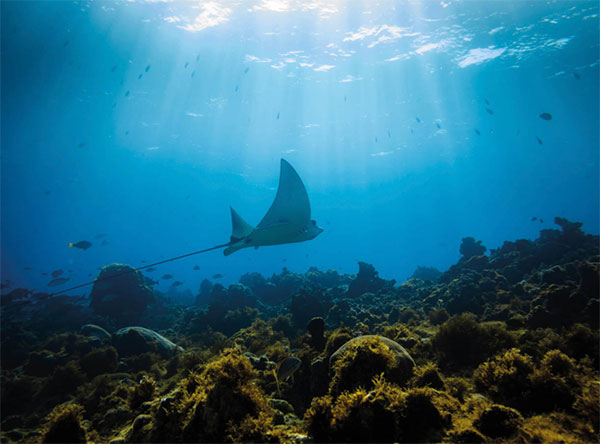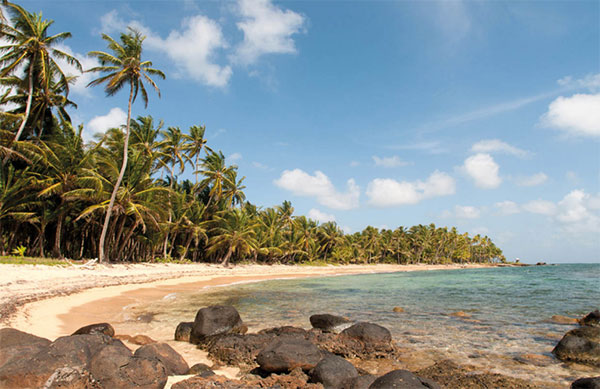BEISBOL, NICARAGUAN-STYLE
In the 1880s an American businessman named Albert Addlesberg was living in Bluefields, at the time part of autonomous Mosquito territory, which had a strong British influence. Cricket was widely popular in Bluefields at the time and Addlesberg convinced two of the clubs to switch to baseball, giving them equipment he had shipped in from New Orleans. The game caught on and spread all along the Caribbean coast. When the region was incorporated into Nicaragua, the sport spread all around the country.
The first official game was played between Managua and Granada in 1891 and US marines stationed in the country during the early years of the 20th-century helped bring it to the masses. In 1956, La Liga Nicaragüense de Beisbol Profesional (LNBP) was formed and enthusiasm for the sport grew, pushed along by the success of the country’s national team on the world stage and the emergence of Nicaraguan players in the American leagues. The league shut down in 1967 amid economic and political problems in the country. After the civil war, the game picked up again and in 2004 the league was reestablished, with teams in Managua, Masaya, Rivas, Granada, and Chinandega. While stadiums lack funding and players often have second jobs, baseball is considered Nicaragua’s national sport.
Pearl Cays
Just off the Caribbean coast, 35km (22 miles) northeast of Pearl Lagoon, the Pearl Cays ¤ [map] are the isolated tropical paradise many hope to find in the Corn Islands. Most of the 18 cays – several of which disappear during high tide – amount to nothing more than a patch of palm trees sticking out of white sand, fringed by coral reefs that can be seen through the crystal-clear water. Several of the islands are privately owned, a touchy subject among the Miskito and Creole islanders who live there and claim them as their own. Some of the cays, like Pink Pearl, can be rented out entirely, although the rest can be visited on day trips from Pearl Lagoon.
From May to November the cays are an important nesting site for the endangered hawksbill turtle, which have traditionally been hunted for their shells. The Wildlife Conservation Society now helps with managing the wildlife on the islands, having trained ex-poachers to protect the nests, from an office in Pearl Lagoon.

An eagle ray flies across a coral reef off Little Corn Island.
iStock
Bilwi
In the far north of Nicaragua’s Caribbean coast, not far from the border with Honduras, Bilwi ‹ [map] is an impoverished port town of 50,000 people, half of which live in the dozens of Miskito communities outside of the center. Also known as Puerto Cabezas, the ramshackle town is surrounded by rivers and lagoons, which make for great exploring.
In town, there are a handful of good seafood restaurants, although the most interesting place to eat is the Mercado Muncipal, where there are stands with traditional dishes like rondón (see margin) and coconut bread. The Muelle Viejo, the old pier, which extends 420 meters (1,378ft) into the sea, is worth a sunset stroll. It’s here that the Contras once received smuggled arms; the Somoza government allowed it as a launch point for the failed, US-funded Bay of Pigs invasion. Today, it’s better known as a launch point for artisanal lobster fishermen. Opened in 2001, the Casa Museo Judith Kain (Mon–Fri 8am–3pm, Sat 1–2pm) is set in a colorful wooden house once owned by a local painter. It now features cultural and historical displays.
The Corn Islands
Two tiny blips of land 83km (52 miles) off of Nicaragua’s Caribbean coast, the chilled-out islands of Big Corn and Little Corn are a world of their own. With white sand beaches fringed with palm trees and turquoise water offering the country’s most pristine coral reefs, the Corn Islands › [map] sound as if they are a fictional place. The creole-speaking islanders get by on lobster fishing and harvesting coconuts, with tourism not far behind. Reached by short La Costeña airline flights from Bluefields and Managua to Brig Bay, or a weekly, 5-hour ferry trip from Bluefields, they are just remote enough to avoid an onslaught of tourists. There are no large resorts here and no ultra-luxury rooms whatsoever. Just simple beachside bungalows and no-frills eateries where the kitchens are, more often than not, exposed to the breeze.
Big Corn
A single paved road runs the length of Big Corn Island, which is where most tourism in the Corn Islands is concentrated. Brig Bay is home to more than half of the total population of the islands, with nearly 4,000 residents who mostly live in the colorful wooden houses that ring that waterfront. It’s the transportation and commercial hub of the islands.
Many come to Big Corn for the beaches, the most famous being Picnic Bay, in the south. It’s a long, white sandy beach with calm blue water and a couple of simple restaurants. Arenas Beach, home of the 29-room Arenas Beach Hotel (www.arenasbeachhotel.com), is smaller, while Sally Peaches Beach on the northeastern shore features pink sand and shallow pools filled with marine life.
With warm water, undisturbed reefs and year-round good visibility, diving is one of the most popular pastimes in the Corn Islands and prices are as inexpensive as those in the Bay Islands. On Big Corn, the PADI-certified Corn Island Dive Center (www.cornislanddivecenter.com) runs inexpensive dives to sites like Blowing Rock, a pinnacle of giant boulders where nurse sharks are usually spotted, and a 19th-century Spanish galleon off Waula Point.
Eat
On Nicaragua’s Caribbean coast, one of the most famous traditional dishes is rondón, an anglicism of the words ‘run down,’ describing the search for the ingredients. The slow-cooked stew simmers coconut milk with anything else that is lying around, which usually includes plantains, yuca, fish and shellfish. It was a traditional African dish that was adapted with local ingredients by slaves brought to the region by the Spanish.
Little Corn
For those that think there is too much going on over on Big Corn Island, they will love Little Corn. Less than 2km (1.2 miles) long, the tiny isle is accessible by speedboat several times a day from Big Corn Island, an approximately 30-minute ride. There are no cars here, just a patch of jungle circled by clean, clear beaches and one well-trodden footpath. Electricity is scarce here and most accommodations are limited to thatched cabanas. One exception is the chic Yemaya Boutique Hotel (www.yemayalittlecorn.com), on the northern shore, with its own spa and farm to table restaurant.

A quiet beach on Little Corn Island.
iStock